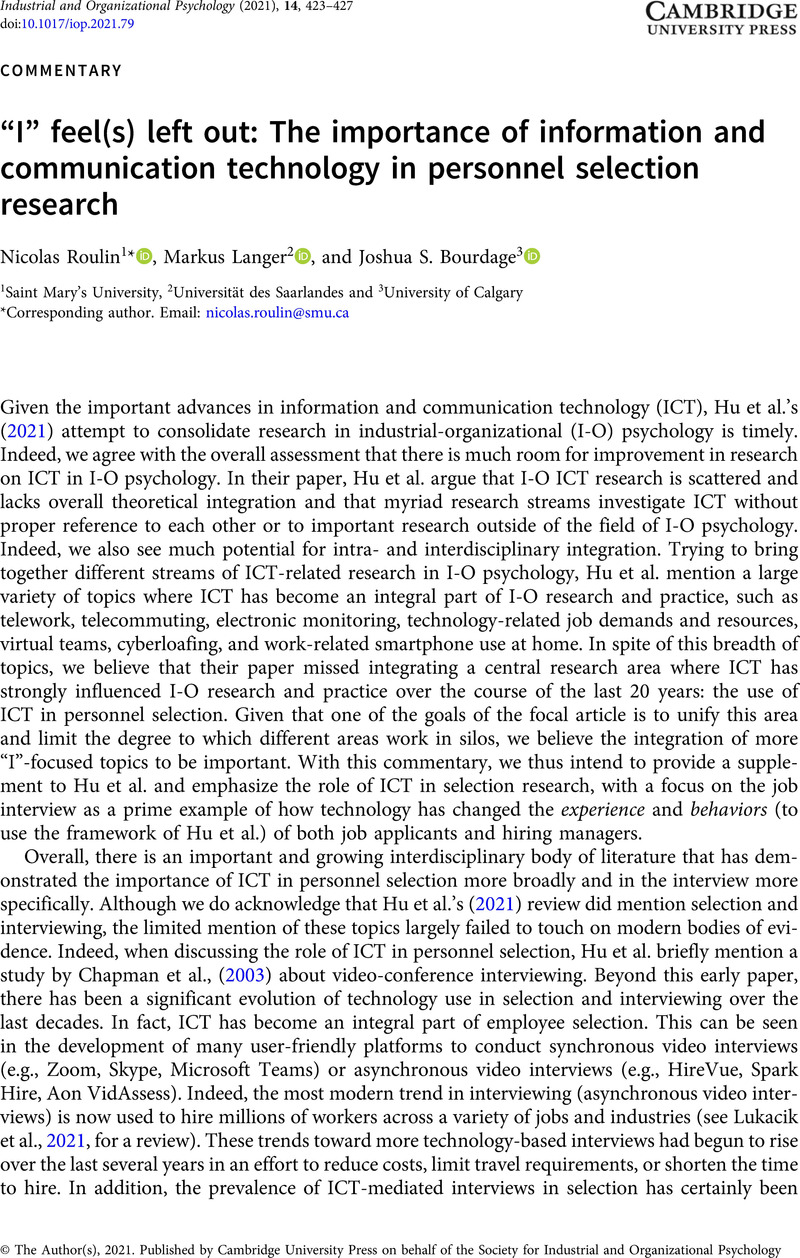Crossref Citations
This article has been cited by the following publications. This list is generated based on data provided by Crossref.
Kim, Jaemin
Greiner, Michael
and
Zhu, Ellen
2024.
Instantaneous audience responses: an organizational genre theory perspective.
Management Decision,
Vol. 62,
Issue. 6,
p.
1831.
Basch, Johannes M.
and
Melchers, Klaus G.
2024.
Here’s Looking at You: Does Eye Contact in Video Interviews Affect How Applicants are Perceived and Evaluated?.
Journal of Business and Psychology,
Suen, Hung-Yue
and
Hung, Kuo-En
2024.
Revealing the influence of AI and its interfaces on job candidates' honest and deceptive impression management in asynchronous video interviews.
Technological Forecasting and Social Change,
Vol. 198,
Issue. ,
p.
123011.



